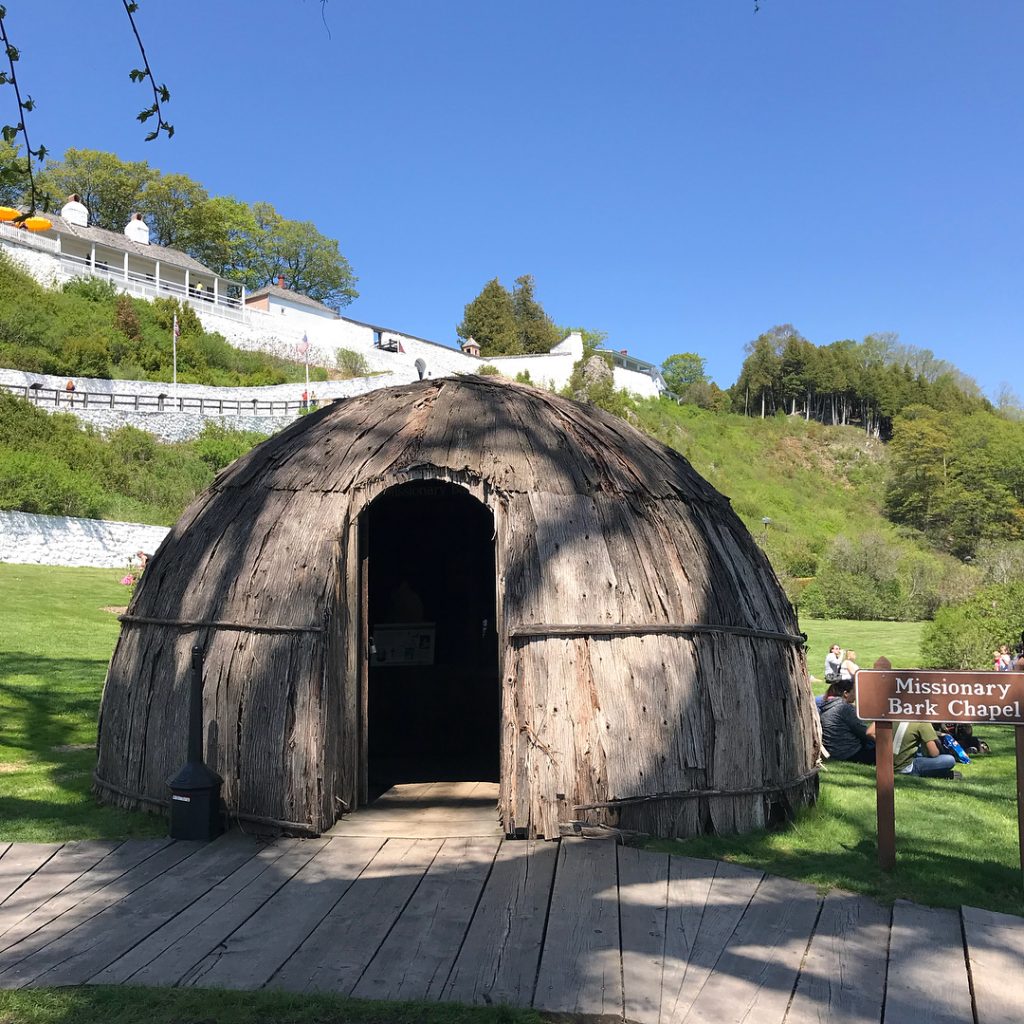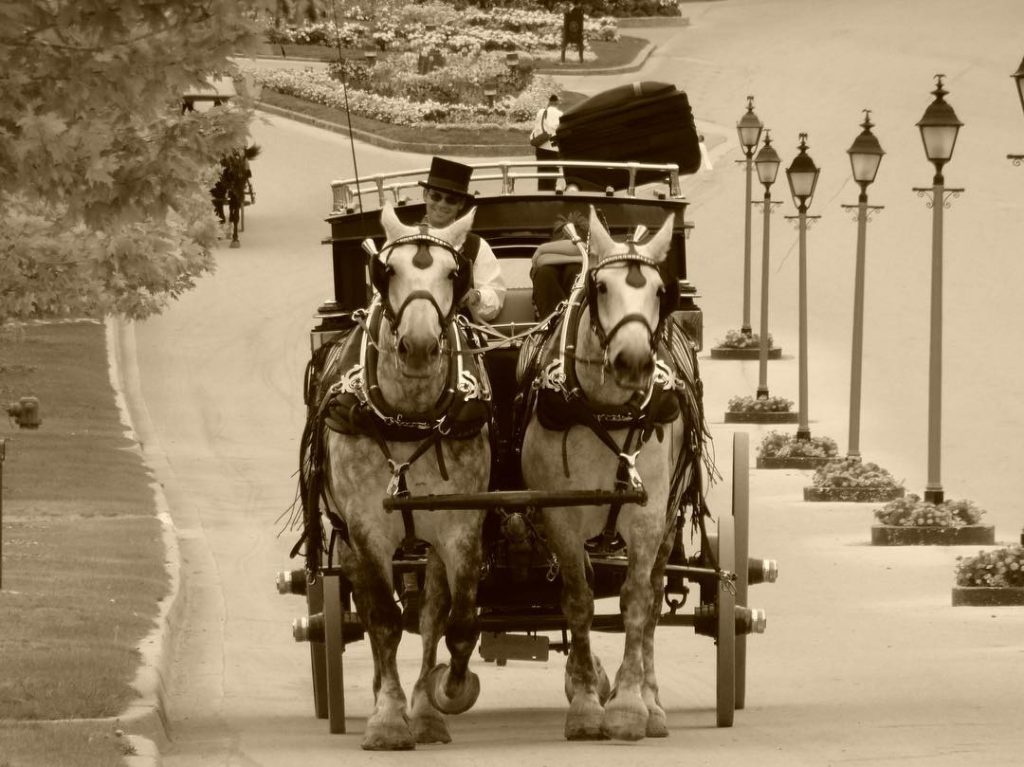Mackinac Island is the No. 1 Best Island in the Continental U.S. for many reasons. A big one is the history of the place.
Mackinac Island maintains deep roots to its past, and the vacation destination you know and love in the 21st century has been shaped by its history in lots of ways.
So, what exactly was it like on Mackinac Island in previous centuries? Here’s a look at Mackinac Island prior to the 1620s, 1720s, 1820s and 1920s. Each snippet gives us a broader sense and appreciation of why Mackinac Island is so special still today.
Mackinac Island more than 400 years ago
Long before Europeans settled in Northern Michigan, Indigenous Peoples called the area home. Mackinac Island has been considered a sacred place for Anishinaabek People (Odawa, Ojibway, and Potawatomi) for centuries. The historical significance has been documented through oral traditions and written history.
Mackinac Island served as sacred burial grounds as well as a place of gathering for fishing, trapping, and navigating the northern waterways. Even the name Mackinac Island is derived from the original Native American name interpreted by the French as Michilimackinac, meaning “Place of the Great Turtle.”
- Why Mackinac Island is pronounced “MACK-in-awe”
- The Legend of Mackinac Island’s Sugar Loaf
- Mackinac Island’s Native American Cultural History Trail is a great place to learn
Mackinac Island in the 1620s
While the Mayflower was bringing Pilgrims to New England in 1620, French explorers were venturing westward toward the Upper Great Lakes into what was then known as New France. It would be 14 years until a European first laid eyes on Mackinac Island, and 50 years until a Catholic mission was established.
The reconstructed Missionary Bark Chapel on Mackinac Island commemorates that mission. It’s located in Marquette Park, which is named after the French missionary who started settlements in nearby St. Ignace and Sault Ste. Marie. The park, which also features a giant statue of Marquette, happens to be the best picnic spot in Michigan.
- Places to Go on Mackinac Island: Marquette Park
- Churches of Mackinac Island: 350 years of historic beauty
Mackinac Island in the 1720s
By 1720, the Straits of Mackinac had become the primary transportation corridor in the Upper Great Lakes, fueling a vibrant fur trade that powered the economy of New France. Just five years earlier, to safeguard the fur trade, the French built Fort Michilimackinac on the mainland at the tip of Michigan’s Lower Peninsula, in what is now Mackinaw City.
But while the fur trade would remain the primary economic activity in the Straits well into the 19th century, in just over 40 years the French would relinquish control of Fort Michilimackinac to the British following the French & Indian War.
- Mackinac Island Field Trip: 5 places for interactive history lessons
- More things to do on Mackinac Island for history buffs
Mackinac Island in the 1820s
Even though the Americans declared independence in the 1770s, Mackinac Island by this time only recently had come under the control of the United States by treaty after the War of 1812. That war included the famous Battle of Mackinac when the British repelled an American attack on the grounds of what is now Wawashkamo Golf Course, the oldest golf course in Michigan.
Why were they fighting on Mackinac Island? Because in 1780 the British moved Fort Michilimackinac to the Mackinac Island’s high bluffs, where it remains to this day as Fort Mackinac. Still today, you can relive 19th-century life at Fort Mackinac and several other Mackinac State Historic Parks including a blacksmith shop, fur company store, 1820s house and Fort Holmes, which the Americans renamed after a U.S. Army major who perished in the Battle of Mackinac.
- Things to do at Mackinac Island’s historic Fort Mackinac
- Meet the Biddles, from 19th-century Mackinac Island
Mackinac Island in the 1920s
While the fur trade continued well into the 1800s, the military and economic significance of Fort Mackinac began to wane. By the latter half of the 19th century, tourism began to emerge as the hallmark of Mackinac Island. Much of Mackinac Island was designated as a national park, staffed by soldiers from Fort Mackinac, and beautiful hotels and Victorian cottages began sprouting.
As more vacationers arrived, entrepreneurs worked to make Mackinac Island synonymous with fudge. In the 1920s, downtown shops innovated the brilliant techniques of demonstrating fudge making right in front of customers and using large ceiling fans to waft the sweet scent out into the street. And although R.E. Olds started churning out automobiles in Lansing two decades before, Mackinac Island banned cars – a distinctive characteristic that remains to this day.
- History of ‘horseless carriages’ on Mackinac Island
- How Mackinac Island became fudge capital of the world
- National parks in Michigan: Mackinac Island was the first
- 5 things you have to see in Michigan’s original national park
Mackinac Island in the 2020s
You can come and tour Mackinac Island by horse-drawn carriage, just as they did back in 1920. You can stay in Mackinac Island hotels, B&Bs and cottages that date back far into the 1800s. You can tour the Biddle House Mackinac Island Native American Museum and get a feel for domestic life on Mackinac Island during the era of the fur trade.
You can fire a cannon at historic Fort Mackinac or explore the beauty of America’s second national park, which is now Mackinac Island State Park. You can come face to face with the same geological rock formations on Mackinac Island that enthralled native peoples many centuries ago, long before Marquette arrived.
What will this next year bring to Mackinac Island? Hopefully, you! Plan your trip to Mackinac Island today!
RELATED MACKINAC ISLAND BLOGS:









